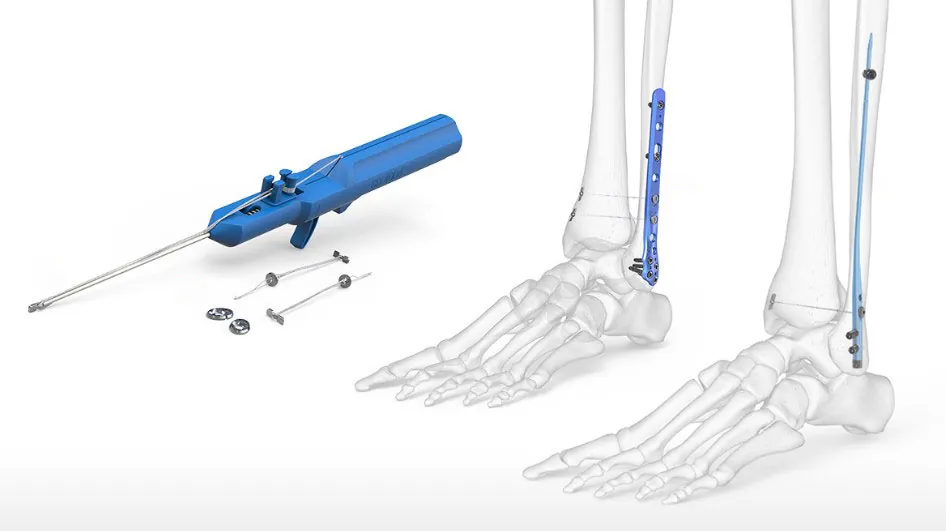Ankle Syndesmosis Repair System with Acu-Sinch Knotless Surgical Technique
Ankle Syndesmosis Repair System with Acu-Sinch® Knotless – Acumed ankle Syndesmosis Repair Solutions Fixation Products
Ankle Syndesmosis Repair System with Acu-Sinch® Knotless
Product Overview
The tibiofibular syndesmosis is disrupted in approximately 10–20% of ankle fracture cases and requires repair.1,3 For decades, screw fixation of the syndesmosis has been the gold standard for treatment.1 However, emerging clinical evidence has demonstrated that flexible, suture-based syndesmosis repairs have successful clinical outcomes and may reduce complications associated with malreduction of the syndesmosis when fixed with screws.2,3,4
Designed in conjunction with Alastair Younger, MB, Ch.B., M.Sc., Ch.M., FRCS(C); Selene Parekh, MD, MBA; and Steven Morgan, MD, the Acu-Sinch Knotless Implant enables the dynamic stabilization of laxity or syndesmotic disruptions to the tibiofibular joint.
The Acu-Sinch Knotless buttons may be augmented with a washer or may be used in conjunction with the Acumed and OsteoMed® fibula fracture fixation plates and intramedullary nails with 3.5mm nonlocking screw holes. Our patent pending release mechanism gives the user control to place the medial button subcutaneously without the need for direct visualization.
Key Features
Dynamic Stabilization
Suture-based dynamic ankle syndesmosis stabilization.
Unique Inserter
Unique inserter for implant deployment without a medial incision.
Integrated
Integrates with Acumed and Osteomed fibula fracture fixation products.
System Overview
With the addition of the Ankle Syndesmosis Repair System using the Acu-Sinch Knotless implant, Acumed can now offer a comprehensive solution for isolated syndesmotic disruption or tibiofibular ligament damage that may occur as part of a more complex ankle injury.
References
- Schepers T. Acute distal tibiofibular syndesmosis injury: a systematic review of suture-button versus syndesmotic screw repair. Int Orthop. 2012;36(6):1199-1206. doi:10.1007/s00264-012-1500-2
- Raeder B, Figved W, Madsen J, Frihagen F, Jacobsen S, Andersen M. Better outcome for suture button compared with single syndesmotic screw for syndesmosis injury: five-year results of a randomized controlled trial. Bone Joint J. 2020;102- B(2):212-219. doi:10.1302/0301-620X.102B2.BJJ-2019-0692.R2.
- Shimozono Y, Hurley E, Myerson C, Murawski C, Kennedy J. Suture Button Versus Syndesmotic Screw for Syndesmosis Injuries A Meta-analysis of Randomized Controlled Trials. Am J Sports Med. 2019 Sep;47(11):2764-2771. doi:10.1177/0363546518804804
- Laflamme M, Belzile E., Bédard L, van den Bekerom M, Glazebrook M, Pelet S. A prospective randomized multicenter trial comparing clinical outcomes of patients treated surgically with a static or dynamic implant for acute ankle syndesmosis rupture. J Orthop Trauma 2015; 29(5): 216-223.
Info Contact
| HEAD | OFFICE |
| Tel | +27 (11) 966 0600 |
| info@medhold.co.za | |
| Address | MSI Business Park, 68 Rigger Road, Spartan, Kempton Park, Gauteng, 1619 |

